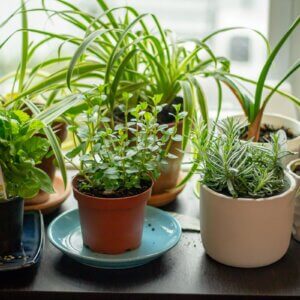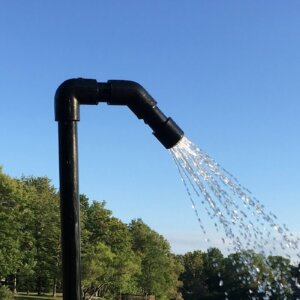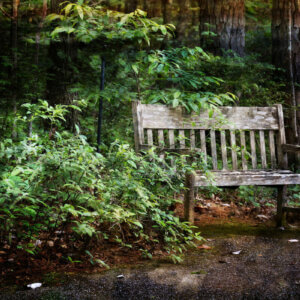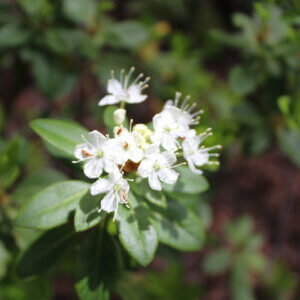Growing cucumbers is a rewarding experience. Nothing is quite as satisfying on a hot day as that juicy crunch when you bite into a fresh cucumber.
These delicious vegetables can be a little tricky to grow, especially in cool climates, but there’s no looking back once you find the varieties and practices that work for you. Here are some tips and tricks on growing cucumbers.
Planting Cucumbers
When you are choosing from varieties, you always look for seeds that are adapted for your climate. With cucumbers though, there are additional differences to consider.
Do you want cucumbers for pickling or eating fresh? Tender or tough-skinned? Bush-growing or a vining variety? You will need to read the seed catalog to find the varieties best-suited for your garden and kitchen purposes.

Cucumbers are a warm-season plant, and in most climates, you’ll start them indoors or in a greenhouse. Transplant the cucumbers when the outdoor temperature rises above 60° F. You should start growing the cucumbers about one week before you anticipate transplanting them.
Direct Seeding Cucumbers
Because the roots of cucumbers are so sensitive, you may not want to risk disturbing them during transplanting. Direct seeding, following the directions on the seed packet, may be a better option.
If you live in a cooler climate and use direct-seed, but want to get a head start on the growing season, try one of my favorite cucumber tricks: Start the seed in a plastic liter bottle with the bottom cut off or in a plastic salad mix container with holes cut in for ventilation. It’s like a miniature greenhouse for your seedling.
As always, be sure to test and amend the soil in your garden beds before planting to ensure the best crop performance. Cucumbers like very neutral soil pH, right around 7, so depending on your area you may need to adjust the soil with lime.
Maintaining Cucumber Plants
Cucumbers are quite sensitive to cold. If you’re growing in a climate, or time, when the nights may be cool, you will need to protect your crop. You should consider using a hoop house, or row cover, to give your cucumbers a little extra protection from the cold.
If you are growing a vining variety of cucumber, a trellis should be used. The trellis will take up less space, and keep your cucumbers from touching the ground.

The rough, spiny texture of the cucumber stalk discourages many insects and pests, like slugs. Unfortunately, small critters, like mice, still love to nibble on the juicy fruit if it is resting on the ground.
Cucumbers have delicate roots, so instead of using a stake directly beside the plant, make a wider base and trellis the cucumbers with rope or wire.
Powdery Mildew And Other Cucumber Diseases
Cucumbers are vulnerable to several bacterial and fungal diseases, like powdery mildew, which are common in late-season plants. Don’t be alarmed if you have mildewing leaves, especially later in the fall.
An early response can control the spread of the fungus, and prolong your plants’ productive lives. At the first sign of diseased leaves, cut away infected portions and destroy them. Don’t put the diseased leaves in your home composting system, because they can infect other plants that way.
At the end of the growing season, pull out diseased plants instead of tilling them back into the soil. After you have finished, sanitize your equipment and work boots.
As always, practice good crop rotation to help control pests and diseases. When you are planning your crop rotation, cucumbers are in the cucurbit family with zucchini, pumpkins, watermelons, and other squash and gourds. These plants are also vulnerable to diseases like powdery mildew, so be sure to rotate cucumbers out of areas that have grown those crops recently.
Harvesting Cucumbers
Cucumbers are easy to harvest and can be picked at any size, although they may become over-ripe if left too long in the sun. A cucumber is too ripe if it begins to turn yellowish, and takes on a tangy flavor.
Overripe cucumbers are still safe to eat, so don’t despair if you miss the optimum window for your cucumbers. Cucumbers that are overripe taste terrific with a dressing, like in my Dad’s favorite, cucumber salad (see recipe below).

Most varieties of cucumber have small spikes or prickles, which can cause irritation or get stuck in the skin like splinters.
If you have a particularly prickly variety of cucumber, wear gloves when you harvest. The cucumber spikes will wipe off easily with a clean rag when you wash your harvested cucumbers (Though you should always wash vegetables you bring in from the garden).
Storing Cucumbers
Store your cucumbers in the refrigerator for the best lifespan. In the fridge, the cucumbers will keep for a couple of weeks, though they may shrivel up because refrigerators are so dry. To prevent cucumbers from losing their juicy crispiness, put them in a closed plastic bag.
Of course, the classic way to preserve cucumbers is to pickle them! Each cucumber variety will pickle differently. Pickling cucumbers are drier and less juicy, which helps them retain their crispness when they are brined. Fresh-eating cucumbers turn soggy when pickled, but they still taste delicious.
Once you have enjoyed the luxury of eating a fresh, juicy cucumber straight out of your garden on a hot day, you will never go back. If you have setbacks or concerns about your cucumbers, reach out to the community around you. Find out if you have a master gardener program in your area, or contact your local extension office. The joy of gardening is not only that it connects you to your food and the earth, but to the people around you.
Cucumber Salad
This recipe was one of my favorite dishes as a child, and always a hit at summer picnics. I’ve met other people who know variations of the cucumber salad, some including mayonnaise or sugar, but the version I learned is one of the simplest.
Ingredients
- 1 Whole cucumber – skin on or peeled, your choice
- ½ a sweet onion or a handful of green onions, chopped coarsely
- Olive oil
- White wine vinegar
- Salt
- Freshly ground pepper
Directions
- Slice the skinned cucumbers into edible chunks.
- Toss cucumber, sweet onion/green onions, and equal parts olive oil and white wine vinegar into a bowl.
- Add salt and freshly ground pepper to taste.
This recipe makes a refreshing, delicious side dish to any summer barbecue.










































My biggest problem with cucumber growing is that they seem to always get aphids and then the ants move in, “farm” the aphids like milk cows. The ants chase away all beneficial bugs that might prey on the aphids. The leaves get curled and deformed, the plant becomes stunted and I don’t get any cucumbers.
This is not disease, just ants and aphids. I have tried controlling the ants, but on our very large lot, it is extremely hard to get rid of ants. They always come back.and the cukes are always decimated.
Try soapy water on them all, or diluted orange oil
Cucurbits are herbaceous annuals or perennials with a storage root and mostly moist vines. These plants grow either prostrate along the ground or climb using tendrils. Plants rarely grow as trees, shrubs, or bushes.
https://lifeandagri.com/pest-and-diseases-of-family-cucurbits/